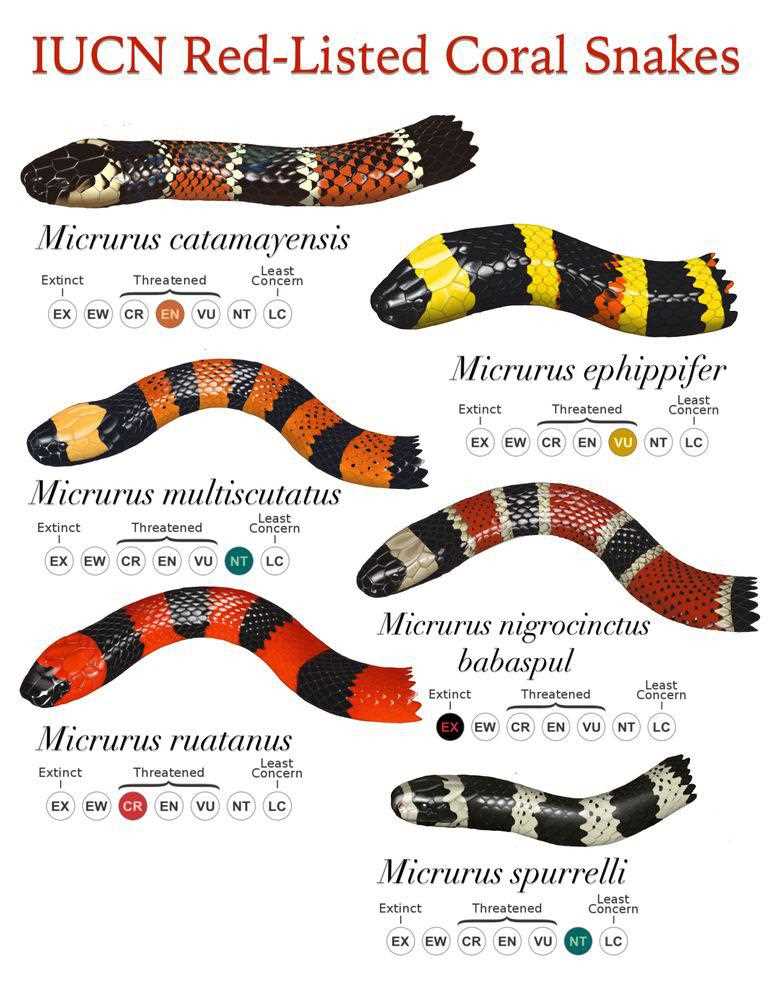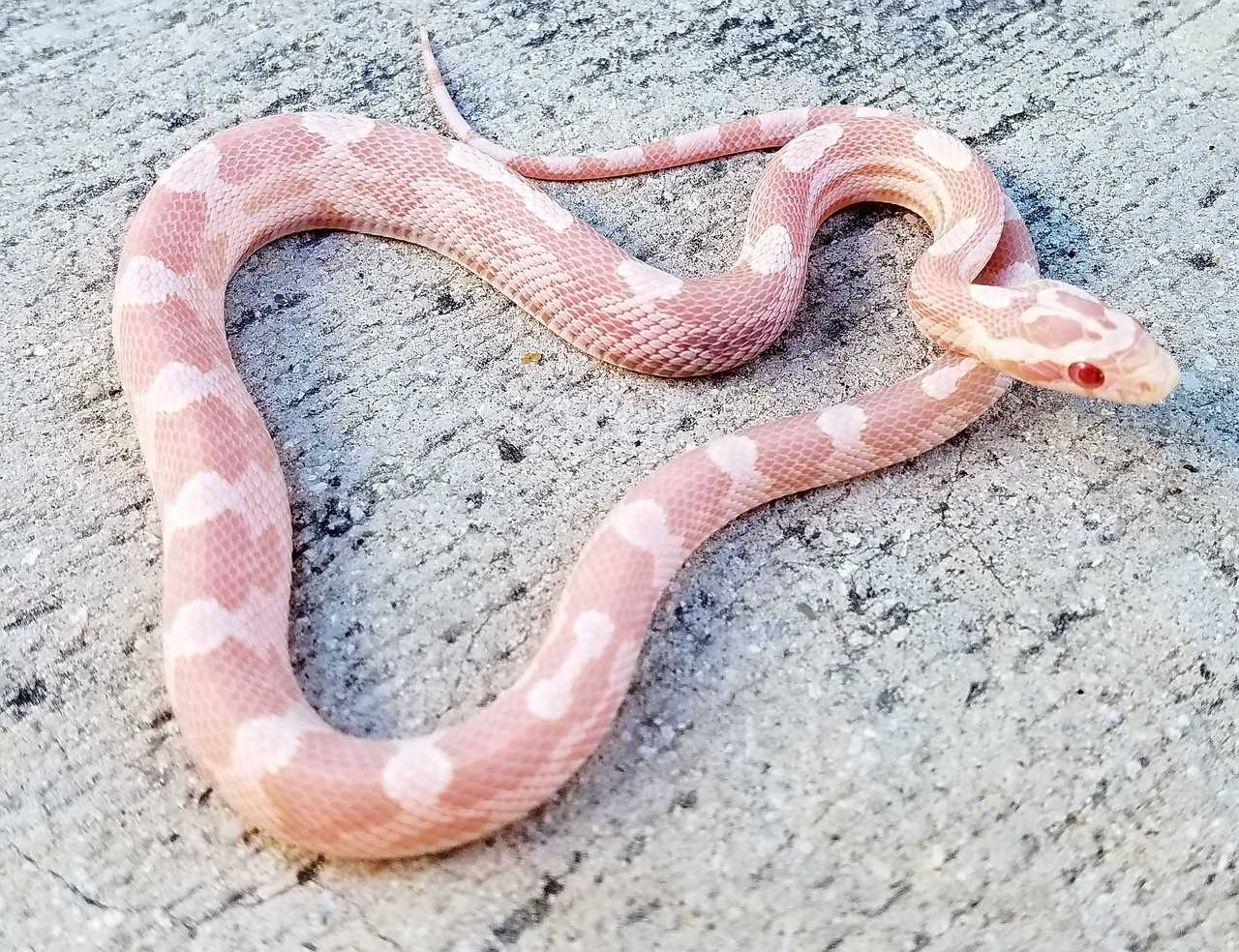
Despite their differences, corn snakes and coral snakes share a common ecological role as predators. Both species play an essential role in controlling pests and maintaining the balance of their respective ecosystems. However, due to their venomous nature, coral snakes are generally considered more dangerous and are not recommended as pets for novice keepers. In contrast, corn snakes make excellent pets for snake enthusiasts of all experience levels.
Serpents: The Predators of the Animal Kingdom
What Is a Corn Snake?
Corn snakes are medium-sized snakes, with adults typically reaching lengths of 4 to 5 feet. They have a slender body and a distinct pattern of reddish-brown or orange blotches on a background of light brown or gray. This pattern resembles the kernels of corn, hence their name.
The Nature of a Predator
As predators, corn snakes mainly feed on small rodents such as mice and rats. They have an incredible ability to swallow their prey whole due to their flexible jaws. These snakes are constrictors, meaning they squeeze their prey tightly to immobilize them before swallowing.
In addition to their feeding habits, corn snakes also reproduce through a process called oviparity. Females lay eggs, which are then incubated for about 2 months before hatching. This adds another fascinating aspect to their nature and reproduction.
Physical Characteristics and Colors
The corn snake is a non-venomous species of snake that is native to the southeastern United States. It is a popular choice among reptile enthusiasts due to its docile nature and vibrant colors. Corn snakes are medium-sized snakes, typically growing to be around 4-6 feet in length. They have a slender and cylindrical body, with smooth scales that give them a shiny appearance.
One of the most distinctive features of corn snakes is their coloration. They come in a wide range of colors and patterns, including red, orange, yellow, brown, and black. The patterns on their scales can vary greatly as well, from simple stripes to complex geometric patterns. This variability in coloration is a result of selective breeding, and there are now numerous different morphs available in the pet trade.
In contrast, the coral snake is a venomous species of snake that is found in North and South America. They are smaller than corn snakes, usually reaching only 2-3 feet in length. Unlike the corn snake, coral snakes have a thick and round body, with smooth scales. They have a distinct pattern of red, yellow, and black bands encircling their body.
Similarities
Despite their differences, there are some similarities between the corn snake and the coral snake. They are both snakes, belonging to the suborder Serpentes. They are both predators and feed on small animals. Additionally, both species are reptiles and have scales covering their bodies.
Differences
The main difference between the corn snake and the coral snake is their venomous nature. While the corn snake is non-venomous and poses no threat to humans, the coral snake is highly venomous and should be avoided. Another difference is their geographical distribution. Corn snakes are found in the southeastern United States, while coral snakes are found in North and South America.
| Corn Snake | Coral Snake |
|---|---|
| Non-venomous | Venomous |
| Native to southeastern United States | Found in North and South America |
| Medium-sized, 4-6 feet in length | Smaller, 2-3 feet in length |
| Wide range of colors and patterns | Distinct pattern of red, yellow, and black bands |
| Constrictor, feeds primarily on small rodents | Elapid, feeds on other small snakes and amphibians |
Feeding Habits and Diet
A corn snake is a nonvenomous reptile that belongs to the serpent family. It is a popular pet snake due to its docile nature and attractive colors. As a predator, the primary diet of a corn snake consists of small mammals, such as mice and rats.
These snakes are constrictors, which means they kill their prey by coiling around them and squeezing until they cannot breathe. Once the prey is dead, the snake will unhinge its jaw to swallow it whole. Corn snakes are capable of eating prey that is larger than their head due to their unique jaw structure.
Reproduction and Breeding of Corn Snakes
The corn snake (Pantherophis guttatus) is a nonvenomous reptile and a member of the serpent family, commonly kept as a pet. One interesting aspect of corn snakes is their reproductive behavior and breeding habits.
Corn snakes are oviparous, meaning they lay eggs rather than giving birth to live young. Breeding season usually occurs in the spring, when the temperatures start to rise. During this time, male corn snakes become more active and will actively seek out females for mating.
When a male finds a receptive female, he will engage in a courtship ritual that involves rubbing his chin against her body and intertwining their bodies. The male may also release pheromones to attract the female. Once courtship is successful, the male will insert one of his hemipenes (reproductive organs) into the female’s cloaca, resulting in the transfer of sperm.
Corn snakes typically lay between 10 and 30 eggs, although larger clutches have been known to occur. The eggs are soft and pliable when first laid, but they quickly harden and develop a leathery texture. The incubation period for corn snake eggs is approximately 60 days, depending on the temperature and humidity levels.
During incubation, the female corn snake plays no role in caring for the eggs. Instead, she may leave the nest and focus on replenishing her energy reserves. The eggs develop on their own, with the temperature and humidity levels dictating the sex of the hatchlings. Higher temperatures generally result in more males, while lower temperatures result in more females.
Once the eggs are ready to hatch, the hatchlings will use a specialized “egg tooth” to break through the shell. They are born fully independent and are capable of hunting and taking care of themselves from the moment of birth. Some breeders prefer to keep the babies separated to prevent cannibalism, while others may choose to keep them together in a communal setup.
Popular Corn Snake Morphs
- Anerythristic Corn Snake: This morph lacks red pigmentation, giving it a gray or black appearance.
- Amelanistic Corn Snake: This morph lacks black pigmentation, resulting in a snake with bright red, orange, or yellow scales.
- Hypo Corn Snake: This morph has reduced melanin production, resulting in lighter colors and sometimes a pinkish hue.
- Lavender Corn Snake: This morph has a purple or lavender coloration, making it highly sought after by collectors.
- Snow Corn Snake: This morph is a combination of the anerythristic and amelanistic morphs, resulting in a snake with white scales and pinkish undertones.
- Caramel Corn Snake: This morph has a caramel or light brown coloration, often with darker blotches or patterns.
These are just a few examples of the many corn snake morphs available in the pet trade. Each morph has its own unique appearance, making them fascinating to observe and admire. Some morphs may be more rare or expensive than others, depending on their popularity and availability. Whether you prefer a vibrant and colorful snake or a more subtle and understated one, there is a corn snake morph to suit every taste.
What Is a Coral Snake?
The venom of a coral snake is highly toxic and can be lethal to both humans and other animals. It contains neurotoxins that affect the nervous system, causing paralysis and, in severe cases, respiratory failure. Despite their venomous nature, coral snakes are not aggressive and will typically try to escape rather than attack when threatened.
Physical Characteristics and Colors
A coral snake is a venomous reptile, known for its bright and distinctive coloration. These serpents are usually small, typically reaching a length of 20-30 inches. They have thin bodies and round eyes with black pupils. Their scales are smooth and glossy, giving them a sleek appearance.
Additionally, coral snakes have a small, blunt head and a short, smooth tail. Unlike some other venomous snakes, they do not possess any noticeable heat-sensing pits between their scales. These physical characteristics are essential for distinguishing a coral snake from a nonvenomous lookalike.
Colors of Coral Snakes:
| Band | Color |
|---|---|
| 1 | Black |
| 2 | Yellow |
| 3 | Red |
Venomous Nature and Warning Signs
The venom of a coral snake is neurotoxic, which means it attacks the nervous system of its prey or potential predators. This venom can be deadly to animals and humans alike if not treated promptly. The coral snake’s venom contains powerful toxins that can lead to muscle paralysis, respiratory failure, and even death.
Geographical Distribution

The coral snake is a venomous serpent that belongs to the elapidae family. It is an elusive and highly venomous animal that is found mainly in the southeastern United States, particularly in states like Florida, Texas, and Louisiana. Due to its venomous nature, it is essential to be cautious when encountering a coral snake in the wild.
On the other hand, the corn snake is a nonvenomous snake species that belongs to the colubridae family. It is a popular pet reptile due to its docile nature and vibrant color patterns. Corn snakes are native to the southeastern and central regions of the United States, ranging from New Jersey to the Florida Keys and west to Louisiana.
While both snakes have overlapping geographical distributions in certain areas, coral snakes are typically found in more specific habitats like forests, swamps, and other secluded areas. Corn snakes, on the other hand, are more adaptable and can be found in a wider range of habitats, including fields, forests, and even residential areas.
Similarities and Differences between Corn and Coral Snakes
Corn snakes and coral snakes are both types of snakes that belong to the reptile family. Despite some similarities in appearance, they have distinct characteristics that set them apart. One significant difference is that while corn snakes are nonvenomous, coral snakes are highly venomous.
Corn Snakes
One of the defining characteristics of corn snakes is their ability to imitate the appearance of the venomous coral snakes. This mimicry helps protect them from potential predators. However, there are key differences in their color patterns that can help differentiate them from coral snakes.
Coral Snakes
Coral snakes, on the other hand, are venomous and should be approached with caution. They have distinctive red, yellow, and black bands that encircle their bodies. These colors serve as a warning sign to predators about their poisonous nature.
| Corn Snakes | Coral Snakes |
|---|---|
| Nonvenomous | Venomous |
| Imitate the appearance of coral snakes | Distinct red, yellow, and black bands |
| Found in southeastern parts of the United States | Found in various regions around the world |
| Slender, elongated body | Smaller in size |
